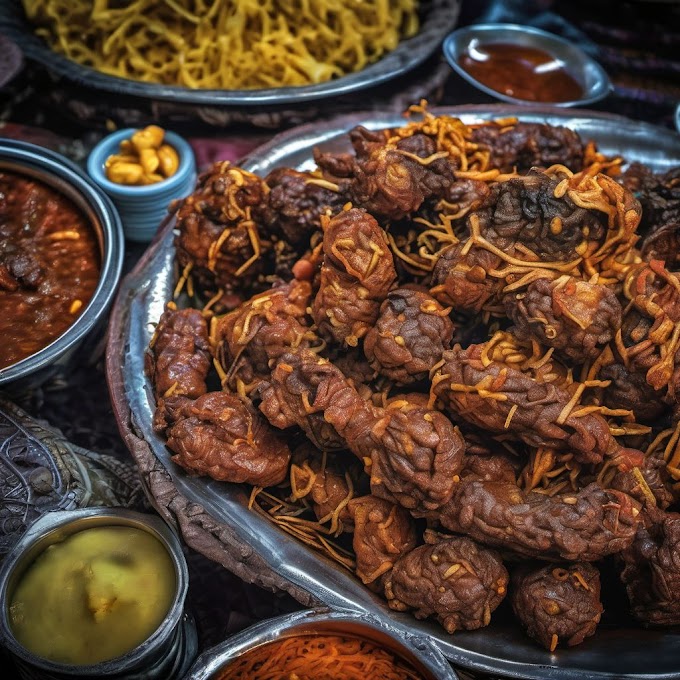
Moroccan cuisine is renowned for its rich flavors, aromatic spices, and diverse influences that have shaped its unique culinary identity. Rooted in a mix of Berber, Arab, Moorish, and Mediterranean traditions, Moroccan cuisine reflects the country's history and geography, with a focus on local ingredients and culinary techniques. Here's an overview of the key aspects of Moroccan cuisine:
1. **Flavorful Spices and Seasonings:** Moroccan cuisine is famous for its skillful use of spices and seasonings. Common spices include cumin, coriander, cinnamon, turmeric, paprika, saffron, ginger, and ras el hanout (a blend of numerous spices). These spices lend depth and complexity to dishes, creating a sensory experience that's truly unique.
2. **Tagines:** A quintessential Moroccan dish, tagines are slow-cooked stews named after the earthenware pot in which they are prepared. These pots have a conical lid that helps to circulate and condense steam, resulting in tender and flavorful dishes. Tagines can feature a variety of ingredients, including meats like lamb or chicken, combined with vegetables, dried fruits, olives, and an array of spices.
3. **Couscous:** Couscous is a staple in Moroccan cuisine and holds cultural significance. It's made from crushed durum wheat and is traditionally steamed over a stew. It's often served with a flavorful broth and accompanied by vegetables, meats, or legumes. Couscous Fridays are a Moroccan tradition where families come together to enjoy this iconic dish.
4. **Pastilla:** Also known as "Bastilla," this is a unique Moroccan dish that blends sweet and savory flavors. Pastilla is typically made with layers of thin pastry dough filled with a mixture of spiced meat (usually pigeon or chicken), almonds, eggs, and saffron. It's then baked until crispy and dusted with powdered sugar and cinnamon.
5. **Harira:** This is a hearty soup commonly enjoyed during Ramadan and other special occasions. Harira is made from a tomato-based broth, lentils, chickpeas, and a mixture of fresh herbs and spices. It often includes small noodles and is traditionally served to break the fast during the holy month of Ramadan.
6. **Preserved Lemons:** Preserved lemons are a key ingredient in Moroccan cuisine, used to add a tangy and slightly bitter flavor to dishes. Lemons are cured in a mixture of salt and their own juice, resulting in a soft, intensely flavored condiment that's added to tagines, salads, and more.
7. **Sweets and Desserts:** Moroccan desserts are a celebration of flavors like almonds, honey, dates, and fragrant spices. One of the most famous Moroccan sweets is "baklava," made from layers of phyllo dough, nuts, and sweet syrup. Another treat is "chebakia," a deep-fried pastry coated in honey and sesame seeds, often enjoyed during Ramadan.
8. **Mint Tea:** Moroccan mint tea, known as "Maghrebi mint tea" or "Berber whiskey," is a symbol of hospitality. It's a blend of green tea, fresh mint leaves, and a generous amount of sugar. The tea is poured from a height to create a frothy layer, and it's served in small glasses, often accompanied by sweet pastries.
9. **Seafood:** Given Morocco's extensive coastline, seafood plays a significant role in the cuisine. Grilled, stewed, or fried fish and seafood dishes are common, with flavors influenced by Mediterranean and Atlantic culinary traditions.








%20(1).png)


